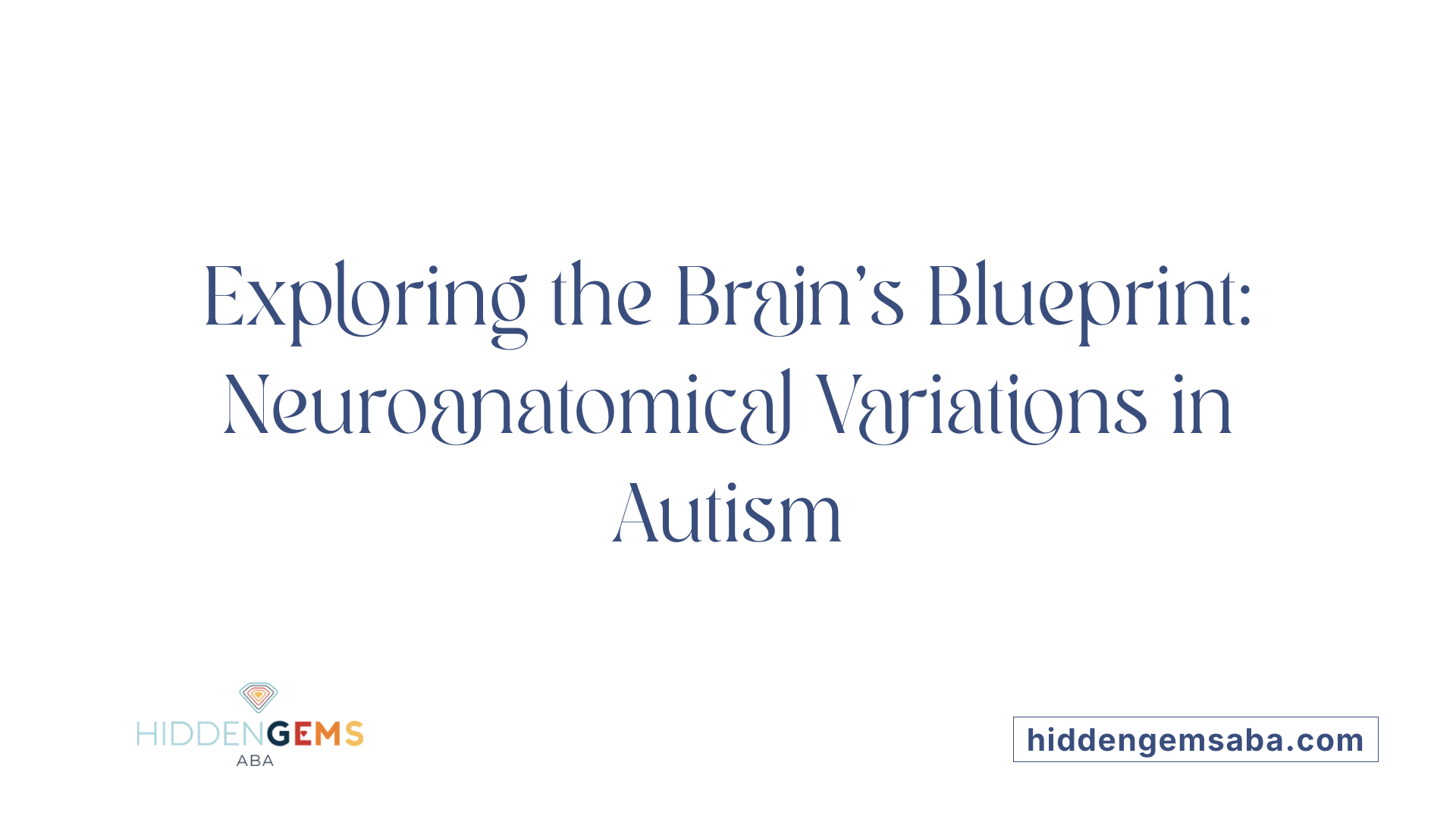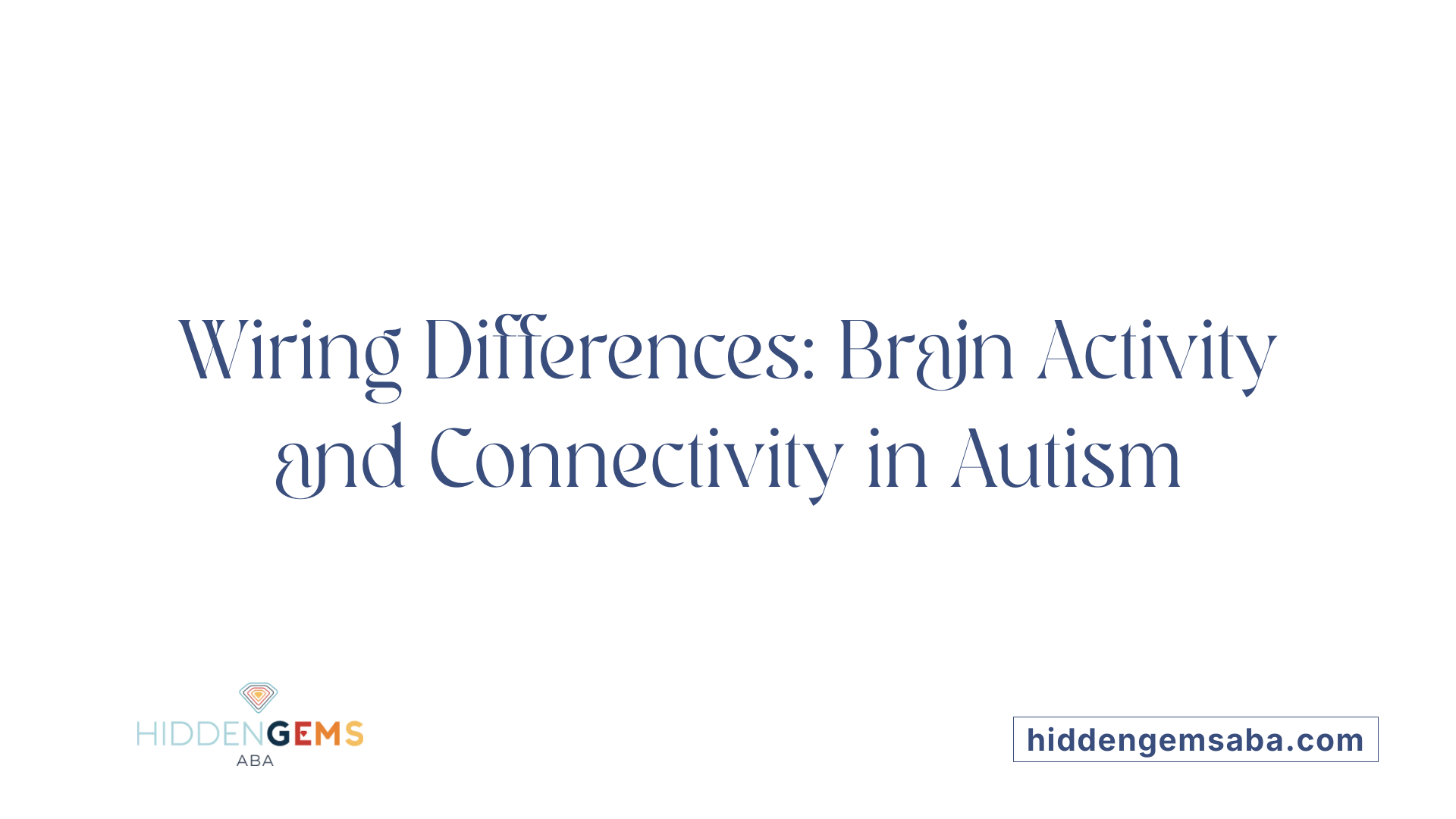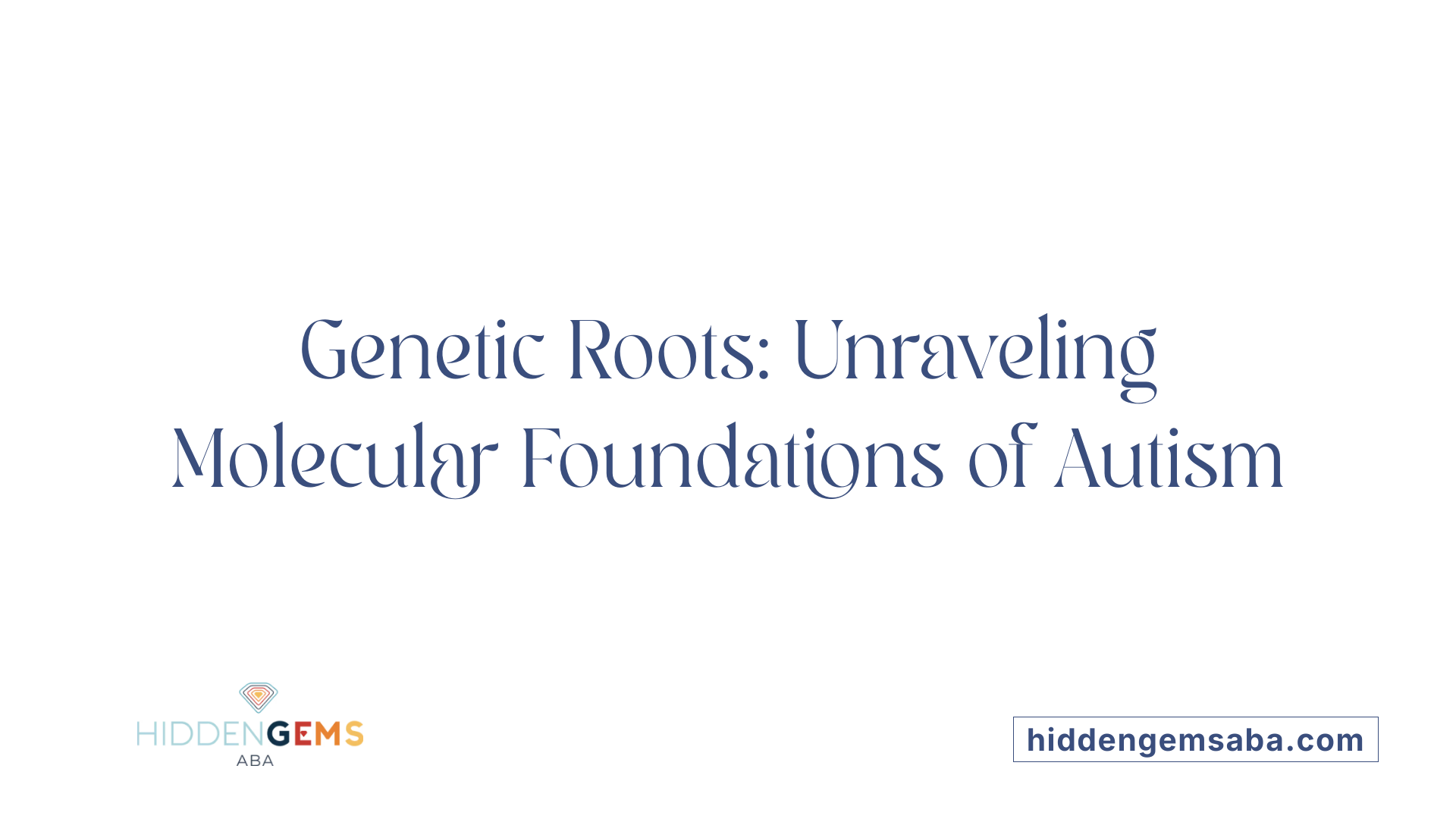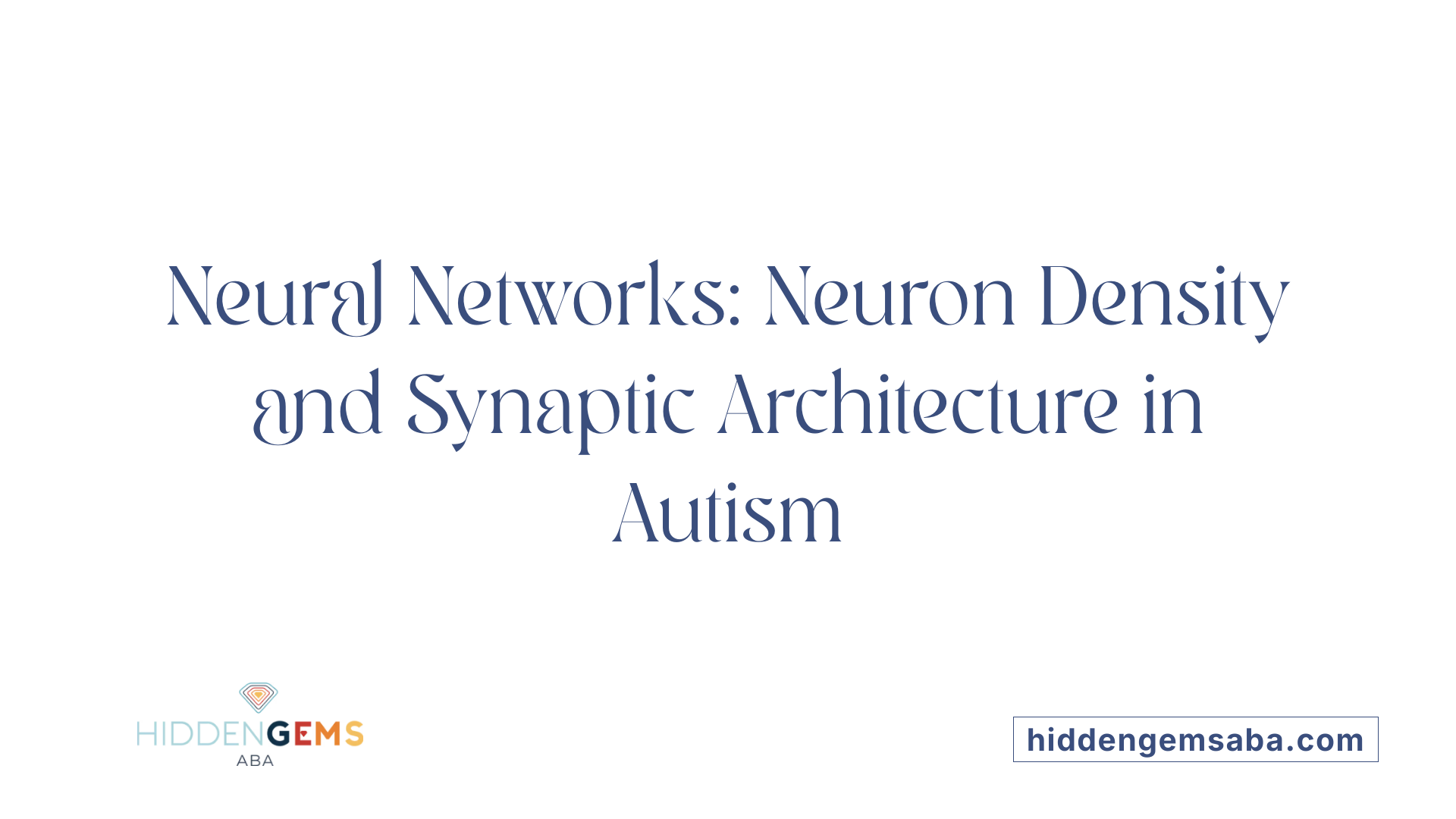Understanding the Neurobiology Behind Autism Spectrum Disorder
Autism spectrum disorder (ASD) is a complex neurodevelopmental condition characterized by social, communicative, and behavioral differences. Insights from neuroanatomical and neurofunctional studies reveal significant differences in brain structure, activity, and molecular genetics between autistic and neurotypical individuals. This article explores these neurobiological distinctions, focusing on how they influence information processing, brain development over time, and the implications for subtyping autism. By examining cutting-edge research, including neuroimaging and genomic analysis, we aim to provide a comprehensive understanding of the autistic brain versus the typical brain.
Structural Neuroanatomical Differences in Autism

What are the key neuroanatomical differences between autistic and neurotypical brains?
Autistic brains exhibit several distinctive structural features that set them apart from neurotypical brains. Early in development, there is often an increase in overall brain volume, a phenomenon known as early overgrowth, especially noticeable during the first years of life. This rapid expansion involves key regions such as the frontal cortex, amygdala, and cerebellum.
As children with autism grow, their brains tend to follow unique developmental trajectories. For instance, some areas like the medial prefrontal cortex show increased gray matter volume, whereas others, such as the hippocampus and cuneus, display reductions. These regional variations in gray matter are associated with differences in functions like memory, social cognition, and visual processing.
Beyond size changes, cellular and microstructural differences are also prominent. Postmortem studies have documented decreases in Purkinje cells within the cerebellum, which are vital for motor coordination and cognitive processes. Additionally, differences in cortical organization include alterations in minicolumn structures, which are fundamental units of neuron arrangement, affecting how information is processed.
Connectivity patterns within the brain further distinguish autism. There is often an imbalance in neural circuitry, with increased short-range connections and weakened long-range pathways. These connectivity issues impact social interaction, communication, and sensory integration.
In summary, the neuroanatomical landscape of autism involves a complex interplay of enlarged and structurally altered regions, cellular variations, and disrupted neural pathways. These differences form the basis for many of the behavioral, emotional, and perceptual characteristics associated with autism spectrum disorder.
Neurodevelopmental Trajectories and Age-Related Changes

How does the autistic brain change with age?
Research shows that the brains of autistic individuals follow unique developmental pathways across their lifespan. During infancy and early childhood, rapid brain growth occurs, especially in areas like the frontal cortex and visual regions, leading to enlarged head size and increased brain volume. This early overgrowth often peaks around ages 2 to 4.
As individuals with autism grow older, their brain development does not follow the typical pattern. Instead, many experience a slowdown in growth, with some regions shrinking or showing reduced volume in adolescence and adulthood. Studies indicate that neuronal density and synapse numbers, which peak during early development, tend to decrease slowly with age in autistic brains, potentially reflecting delayed or altered synaptic pruning processes.
Gene expression changes play a central role in these developmental shifts. Variations over the lifespan—especially in genes related to inflammation, immune response, synaptic transmission, and neural signaling—highlight ongoing biological adjustments. For example, increased expression of inflammation-related genes and heat-shock proteins in adults may suggest persistent immune activation or stress responses.
These molecular changes are linked to functional alterations. In older autistic adults, there's evidence of altered brain connectivity patterns, including decreased long-range connections and increased local activity. Such changes can manifest as increased behavioral rigidity, difficulties in social interactions, or cognitive decline.
Furthermore, neurotransmitter systems, notably GABAergic inhibitory pathways, show decreased gene expression with age, which could contribute to neural hyperactivity or excitatory-inhibitory imbalances. Insulin signaling pathways also exhibit age-dependent shifts, potentially impacting neuronal health and making the brain more vulnerable to neurodegenerative processes like Alzheimer’s disease.
Diffusion MRI studies tracking brain microstructure reveal that patterns of white and gray matter integrity evolve differently in autism compared to neurotypical development. Changes in connectivity and tissue microstructure are associated with the severity of autism symptoms and may worsen or improve over time.
Impact of gene expression variations over lifespan
Overall, the long-term alterations involve complex interactions between structural changes, gene activity, and neural circuitry. As individuals age, persistent or worsening immune and inflammatory responses, alongside disrupted synaptic and neurotransmitter functions, can influence cognitive functions and mental health.
Recognizing these age-related brain changes is crucial for developing targeted interventions. Addressing neuroinflammation, supporting synaptic health, and moderating excitatory-inhibitory imbalances may help improve quality of life in aging autistic populations.
| Developmental Stage | Typical Brain Changes | Autistic Brain Changes | Underlying Molecular Factors |
|---|---|---|---|
| Infancy & early childhood | Rapid growth, increased volume, synaptogenesis | Early overgrowth, increased folding | Genes related to cell proliferation, growth factors |
| Adolescence | Synaptic pruning, volume stabilization | Reduced or altered pruning, volume decreases | Inflammation, immune gene activation |
| Adulthood | Maintenance, gradual decline | Long-range under-connectivity, decreased neuronal density | Changes in synaptic signaling, neurotransmitter balance |
Understanding these complex temporal patterns informs better diagnosis, treatment options, and support systems throughout an autistic person’s life.
Functional Brain Activity and Connectivity

How do neuroimaging findings reflect differences in brain activity between autistic and typical individuals?
Neuroimaging studies have provided a window into the distinct brain activity patterns observed in individuals with autism spectrum disorder (ASD). These findings reveal that autistic brains often exhibit atypical connectivity and structural abnormalities involving various key regions. Early in life, some children with ASD show signs of brain overgrowth along with enlarged amygdalae, which are critical for processing emotions. Conversely, reductions in the size of the corpus callosum, the major fiber bundle connecting the two hemispheres, suggest diminished interhemispheric communication.
Diffusion tensor imaging (DTI) techniques have uncovered decreased coherence in white matter pathways, indicating less efficient communication between different brain areas. Such disruptions are especially evident between regions responsible for sensory integration, social cognition, and executive functions. Functional MRI (fMRI) studies further demonstrate decreased long-range connectivity — meaning distant brain regions communicate less effectively — leading to network inefficiencies.
These neuroimaging signatures align with the behavioral traits seen in autism, such as difficulties in social understanding, sensory sensitivities, and language processing. The findings point to a brain wired differently, where altered neuron density, especially in the cortex, contributes to the unique neurobiological framework underlying ASD.
Genetic and Molecular Foundations of Autism

What genetic and molecular factors contribute to differences in the autistic brain?
Autism spectrum disorder (ASD) is influenced by a variety of genetic and molecular factors that work together to shape brain development. These factors include a wide range of genes, genetic variants, and epigenetic modifications. Genes involved in synaptic formation, such as neuroligins, neurexins, and SHANK, are crucial for establishing neural connections. Variants in genes regulating neurotransmitters, like SLC6A4 (serotonin transporter) and HTR2A (serotonin receptor), also impact neural signaling pathways.
Structural genetic changes, such as copy number variations (CNVs) and mutations in chromosomal regions like 15q11-13 and 7q31, are associated with increased ASD risk. These alterations can affect multiple aspects of brain structure, including connectivity and morphology.
Epigenetic mechanisms—such as DNA methylation and histone modifications—modulate how genes are expressed without changing the underlying DNA sequence. These modifications influence neural connectivity and brain plasticity relevant to ASD.
Immune response and neuroinflammation are also implicated, with evidence showing altered immune gene expression and immune cell activity in the autistic brain. These changes may affect neural development and synaptic function.
Disruptions in mitochondrial function, amino acid metabolism, and signaling pathways like AKT/mTOR further contribute to atypical brain growth. For example, mitochondrial dysfunction may impair energy production, affecting neuronal health and connectivity.
Overall, the complex interplay of these genetic and molecular factors contributes to the neurodevelopmental differences observed in individuals with autism, impacting synaptic density, neural circuitry, and brain morphology.
Neuron Density, Synaptic Structures, and Brain Wiring

How does neuron density and synaptic structure differ in autistic brains?
Autistic brains display distinct differences in neuron density and synaptic organization compared to neurotypical brains. In children and adolescents with autism, there is often an excess of synapses in various brain regions, a consequence of slower-than-normal synaptic pruning during early development. This process, which normally refines neural connections for more efficient brain function, appears disrupted in autism, resulting in an overabundance of synaptic connections.
However, in autistic adults, recent PET scan studies using a novel radiotracer (11C-UCB-J) have revealed that synaptic density is approximately 17% lower than in neurotypical individuals. This suggests that over time, there may be a decline in synaptic connections, possibly due to accelerated pruning or neurodegeneration, leading to reduced synaptic numbers in adulthood.
These variations in synaptic density and structure significantly influence how neural circuits communicate. In autism, there is often a pattern of local overconnectivity, where neurons within close regions are excessively linked, and a reduction in long-range connectivity between distant brain areas. This imbalance can affect complex functions like social interaction, sensory integration, and cognition.
Overall, the differences in neuron and synaptic organization underpin many core features of autism, including social difficulties, sensory sensitivities, and repetitive behaviors, highlighting the importance of understanding the neurobiological basis of the condition.
Subtypes of Autism: Brain-Based Classifications
Are there identifiable subtypes of autism based on brain research?
Yes, recent research confirms that autism can be classified into different subtypes based on distinct neural and genetic profiles. Scientists utilize advanced neuroimaging techniques, such as functional MRI and diffusion MRI, combined with gene expression analysis, to understand this diversity.
Studies involving large groups of autistic individuals have identified four main subtypes. These subgroups are distinguished by their patterns of brain connectivity, activity levels, and behavioral traits like verbal ability, social skills, and repetitive behaviors. For example, one subgroup exhibits hyperactive connections in visual and sensory processing areas, possibly explaining sensory sensitivities. Another shows weaker connections in regions involved in social behavior and attention.
On a molecular level, gene expression and protein interaction studies reveal significant differences across these subtypes. Variations include altered expression of genes related to synaptic function, neural signaling, and immune response. Proteins such as oxytocin, involved in social behavior, also differ among the groups.
Behavioral and neural profile distinctions among these subtypes highlight the neurobiological complexity of autism. Recognizing this diversity is essential for developing more precise and personalized treatment approaches.
| Subtype | Neural Characteristics | Behavioral Traits | Molecular Features |
|---|---|---|---|
| 1 | Hyperconnectivity in visual/sensory regions | Severe social challenges, some preserved verbal skills | Upregulated genes related to synaptic activity |
| 2 | Weak connections in social cognition areas | Repetitive behaviors, lower verbal ability | Genes linked to immune response altered |
| 3 | Disrupted long-range connectivity | Atypical sensory processing, variable language skills | Changes in protein networks involved in neural signaling |
| 4 | Increased hemispheric symmetry | Mixed behavioral symptoms, some social strengths | Unique gene expression patterns impacting brain structure |
This classification underscores how brain-based differences contribute to the wide spectrum of autism. Ongoing research continues to refine these subtypes, offering hope for tailored therapies that address individual neural and genetic profiles.
Integrating Neurobiology for Personalized Autism Interventions
Emerging research underscores the profound neuroanatomical, functional, and molecular differences between autistic and neurotypical brains. These variations influence information processing, developmental trajectories, and behavioral manifestations. Recognizing the heterogeneity within autism, including distinct subtypes, highlights the importance of personalized approaches to diagnosis and treatment. As neuroscience advances, a deeper understanding of these neural distinctions will pave the way for targeted therapies that address the core neural differences, improving quality of life for individuals with autism.
References
- A Key Brain Difference Linked to Autism Is Found for the First Time ...
- Autism Spectrum Disorder: Autistic Brains vs Non ... - Health Central
- Autism - Autistic Brain vs Normal Brain - UCLA Medical School
- The neuroanatomy of autism – a developmental perspective - PMC
- Study reveals differences in brain structure for older autistic adults
- New Autism Research Finds That Autistic Brains Are Differently Wired
- UC Davis study uncovers age-related brain differences in autistic ...





